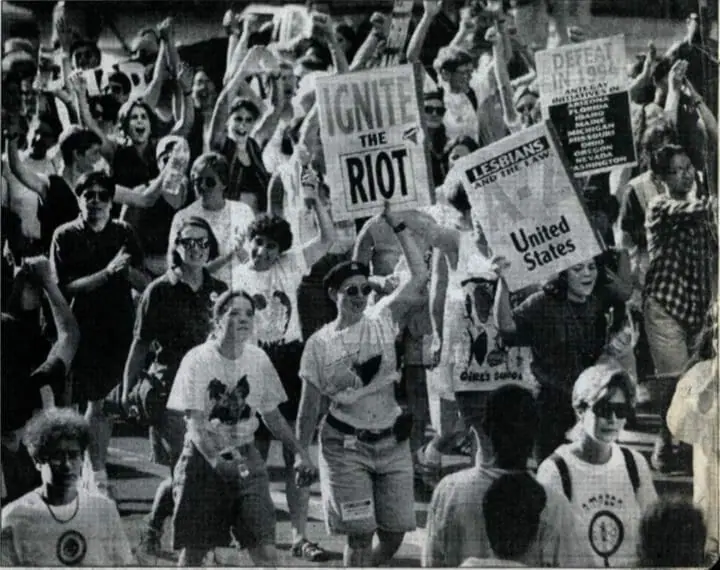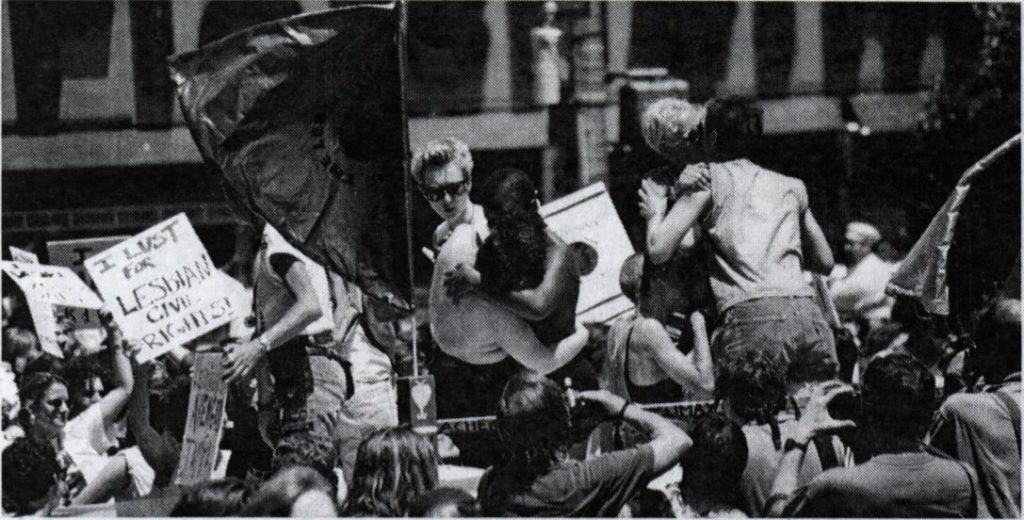

Let's Talk!
If you have questions about using Gale LibGuides or A-to-Z list import files, please feel free to reach out to Gale's Academic Outreach & Engagement team. We are happy to help you customize, copy, share and upload materials to your Institution's site.
 Over time, the Lesbian Avengers grew into a national (and international) organisation, with groups across the world. Geographical spread is an important part of activism, especially when dealing with a global issue such as queer-phobia and related prejudices, but increasing breadth is not as important as increasing depth through an appreciation of and commitment to intersectionality.
Over time, the Lesbian Avengers grew into a national (and international) organisation, with groups across the world. Geographical spread is an important part of activism, especially when dealing with a global issue such as queer-phobia and related prejudices, but increasing breadth is not as important as increasing depth through an appreciation of and commitment to intersectionality.
The Lesbian Avengers did make strides towards intersectionality. In October 1992, they held a vigil for Hattie Mae Cohens and Brian Mock, “a Black lesbian and a disabled gay man”, who had been murdered the month before. The New-York Chapter “sought the participation of other lesbian groups in [New York], many of which are neighborhood-based in predominantly Black and Latino sections of the city … or are organized along racial and ethnic lines”, including the fellow lesbian activist group, Las Buenas Amigas.
 All was not as it seemed, however. Throughout the lifetime of the Lesbian Avengers, another group grew within it: CITYAXE. CITYAXE described themselves as a “project of the Lesbian Avengers dedicated to instigating and organizing multicultural, multiracial activism by and for New York City lesbians” which included in its founding membership Lidia Medina, who had been a member of both the Lesbian Avengers and Las Buenas Amigas.
All was not as it seemed, however. Throughout the lifetime of the Lesbian Avengers, another group grew within it: CITYAXE. CITYAXE described themselves as a “project of the Lesbian Avengers dedicated to instigating and organizing multicultural, multiracial activism by and for New York City lesbians” which included in its founding membership Lidia Medina, who had been a member of both the Lesbian Avengers and Las Buenas Amigas.
In May 1995, the founding members of CITYAXE wrote an open letter to the leadership of the Lesbian Avengers which was read out at one of the group’s meetings. The letter announced that CITYAXE was breaking away from the Lesbian Avengers and that six of the seven founding members of CITYAXE were also terminating their membership of the Lesbian Avengers. The reason for this schism was, in CITYAXE’s own words, due to their coming “to the conclusion that a multiracial, multicultural lesbian activist project is not viable in the context of an actively hostile white, racist group.” The Lesbian Avengers were 92% white and CITYAXE accused them of showing no interest in criticising themselves or confronting instances of racism within their ranks.
Four days after this letter was read out, the founding members of CITYAXE (save for Lidia Medina) gave personal statements as to why they were leaving the Avengers. Across the statements, the grievance is clear: the Lesbian Avengers were not doing enough to properly represent lesbians of colour, nor were they interested in making their own group a safe and accessible place for lesbians of colour to engage in intersectional activism. Among the leavers was Ana Simo, one of the founding members of the Lesbian Avengers, who was disgusted that “CITYAXE was drummed out of the Avengers by relentless hostility” and called for a rebuilding of the entire Lesbian Avengers based on critical self-examination.
“This is not the end:” Simo wrote, “it’s a chance to start all over again”.
The rise and fall of the Lesbian Avengers highlights the importance of intersectionality in LGBTQ+ activism. Queerness is not reserved for white people, and this should be recognised. LGBTQ+ activism has never happened without queer people of colour, nor should it ever happen without queer people of colour. To pretend that such a thing is even possible is to sow the seeds of failure.
The content of this LibGuide was adapted from the original author’s blog post which can be found here. Some of the author’s original words have been edited to accommodate general research inquiry related to the topic.
Gale is committed to helping students discover research insights to advance learning and research. Gale Ambassadors are students who work within their own university to increase awareness of the Gale primary source collections available to their fellow students. Our Ambassadors study a variety of different disciplines, and all are open to receiving thoughts or questions from other students at their university about Gale Primary Sources.